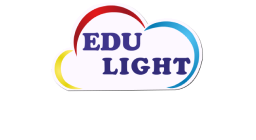In the rapidly evolving landscape of education, hybrid e-learning has emerged as a transformative approach, combining the strengths of traditional face-to-face instruction with the flexibility and accessibility of online learning. This blended model offers a dynamic and comprehensive learning experience that caters to diverse student needs and learning styles. Let’s explore the evolution, benefits, challenges, and best practices of hybrid e-learning.
What is Hybrid E-Learning?
Hybrid e-learning, also known as blended learning, integrates in-person classroom experiences with online educational materials and activities. This model leverages technology to provide a more flexible and personalized learning experience while maintaining the valuable elements of traditional education.
Evolution of Hybrid E-Learning
1. Early Integration of Technology in Classrooms
- The initial steps towards hybrid learning began with the introduction of computers and educational software in classrooms. Teachers started using digital tools to supplement their lessons and enhance student engagement.
2. Development of Learning Management Systems (LMS)
- The rise of LMS platforms like Blackboard and Moodle in the late 1990s and early 2000s enabled educators to organize and deliver course materials online, facilitating a more structured approach to blended learning.
3. Expansion of Online Resources and Tools
- With the proliferation of the internet, a vast array of online resources, including educational videos, interactive simulations, and digital textbooks, became available. These resources complemented in-person instruction and provided additional learning opportunities.
4. Advancements in Mobile and Cloud Technologies
- The advent of mobile devices and cloud computing further enhanced hybrid learning by allowing students to access educational content anytime and anywhere. This flexibility became a significant advantage for learners with varying schedules and commitments.
5. Personalized and Adaptive Learning Technologies
- Recent advancements in AI and machine learning have enabled the development of personalized learning experiences. Adaptive learning technologies analyze student performance data to tailor instruction and support to individual needs, improving learning outcomes.
Benefits of Hybrid E-Learning
1. Flexibility and Accessibility
- Hybrid e-learning offers students the flexibility to learn at their own pace and on their schedule. This model is particularly beneficial for working professionals, parents, and others with time constraints.
2. Enhanced Engagement and Interaction
- Combining online and in-person elements can increase student engagement. Interactive online activities, such as quizzes and discussion forums, complement classroom interactions and provide multiple avenues for participation.
3. Personalized Learning Experiences
- Adaptive learning technologies in hybrid models allow for personalized instruction based on individual student performance. This tailored approach helps address specific learning gaps and promotes mastery of the material.
4. Cost-Effectiveness
- Hybrid e-learning can be more cost-effective than traditional education by reducing the need for extensive physical infrastructure and enabling institutions to reach a larger audience with existing resources.
5. Improved Learning Outcomes
- Research has shown that hybrid learning can lead to better learning outcomes compared to purely traditional or online methods. The combination of diverse instructional strategies and resources supports deeper understanding and retention of knowledge.
Challenges of Hybrid E-Learning
1. Digital Divide
- Ensuring all students have access to the necessary technology and internet connectivity remains a challenge. Institutions must address this digital divide to provide equitable learning opportunities.
2. Teacher Training and Support
- Educators need adequate training and ongoing support to effectively integrate online components into their teaching. Professional development programs are essential for helping teachers adapt to hybrid models.
3. Maintaining Student Motivation and Engagement
- Keeping students motivated and engaged in a hybrid environment requires innovative instructional strategies and continuous feedback. Educators must find a balance between online and in-person activities to sustain student interest.
4. Quality Assurance
- Ensuring the quality of online components is crucial for the success of hybrid e-learning. Institutions must establish rigorous standards and assessment methods to maintain the integrity of the learning experience.
Best Practices for Implementing Hybrid E-Learning
1. Effective Course Design
- Design courses that seamlessly integrate online and in-person elements. Clearly outline the objectives, expectations, and assessment methods for both components to ensure a cohesive learning experience.
2. Utilize Diverse Instructional Methods
- Employ a variety of instructional strategies, such as lectures, interactive simulations, group projects, and self-paced learning modules. This diversity caters to different learning styles and keeps students engaged.
3. Foster Collaboration and Interaction
- Design courses that seamlessly integrate online and in-person elements. Clearly outline the objectives, expectations, and assessment methods for both components to ensure a cohesive learning experience.
4. Provide Timely Feedback and Support
- Offer timely and constructive feedback on assignments and assessments. Provide additional support through virtual office hours, tutoring sessions, and accessible online resources.
5. Monitor and Evaluate Effectiveness
- Continuously monitor the effectiveness of the hybrid model through student feedback, performance data, and regular evaluations. Use this data to make informed adjustments and improvements.
Conclusion
Hybrid e-learning represents a powerful approach to education, combining the best of traditional and digital methods to create a flexible, engaging, and effective learning experience. By addressing the challenges and implementing best practices, educational institutions can harness the full potential of hybrid e-learning to meet the diverse needs of their students and prepare them for success in an increasingly digital world.





